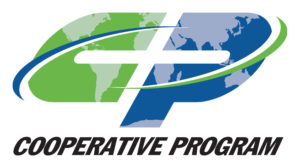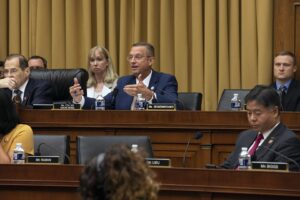
Test your knowledge of the Cooperative Program with this quiz. (Jump to answers)

- The Cooperative Program was established by SBC action in
- 1845
- 1907
- 1925
- 1954
- 2010
- The Cooperative Program was recommended by the thirty-eight-member “Commission on Future Program”
- As a mechanism to provide financial stability for Convention entities following the failed $75 Million Campaign
- As a natural successor of the widely-popular and successful $75 Million Campaign
- As a means of protecting the Convention’s assets after Home Mission Board treasurer Clinton Carnes embezzled almost $1 million
- As a vehicle to manage a rapidly-expanding set of ministry entities when three new seminaries were formed within a decade of time (Golden Gate, Southeastern, Midwestern)
- As an attempt to control and limit contributions to SBC missions and ministries causes
- The Future Program report in 1925 recommended a total allocation of _____________ for all SBC entities in 1926.
- $3,500,000
- $5,000,000
- $10,000,000
- $16,000,000
- $19,500,000
- Which entity or entities never received Cooperative Program funding?
- Annuity Board/GuideStone Financial Resources
- SBC Education Commission
- Foreign/International Mission Board
- Sunday School Board/LifeWay Christian Resources
- All of the above
- None of the above
- The average percent of a church’s undesignated income that was forwarded through the CP during the past year of record (2012–2013) was
- 4.41 percent
- 5.50 percent
- 6.22 percent
- 8.73 percent
- 10.24 percent
- The “1% CP Challenge” is a challenge
- To increase the number of churches contributing through the Cooperative Program by 1 percent
- To increase the amount of funds contributed to SBC causes through any means by 1 percent per year for the next five years
- To decrease the portion of Cooperative Program funds retained by state conventions by 1 percent per state
- To increase the portion of a church’s undesignated receipts it forwards through CP by 1 full percentage point
- To petition the government to subsidize Cooperative Program gifts by 1 percent of the annual GDP (gross domestic product)
- Responsibility to promote the Cooperative Program has been assigned by the SBC to
- The Executive Committee
- The Great Commission Council
- The Stewardship Development Association
- State convention executive directors
- NAMB church planter catalysts and church planters, IMB missionaries and administrators, SBC seminary faculty and students, and ERLC staff
- According to the Great Commission Resurgence Final Report, the “preferred means” through which churches contribute to support SBC entities is through
- The SBC-adopted missions offerings and fund (Lottie Moon, Annie Armstrong, World Hunger Fund/Global Hunger Relief)
- Great Commission Giving
- The Cooperative Program
- Designated gifts forwarded directly to state convention entities and SBC entities
- A special designation on IRS Form 1040
- By definition, the “cooperative” of Cooperative Program refers to
- Local churches cooperating together to contribute to Kingdom causes through the Southern Baptist Convention
- SBC entities cooperating together to share an equitable distribution of church contributions to help underwrite their respective ministries
- The SBC, state conventions, and local associations cooperating together to educate churches about the value of shared ministry to reach the nations with the Gospel
- The SBC and state conventions cooperating together to provide a means by which churches can fund ministries at the state and national level through submission of a single check
- SBC entity leaders agreeing to compete with one another for contributions from supporting Southern Baptist and other evangelical churches across the United States and around the world
- Since the turn of the twenty-first century, total CP (both state and national) has yielded
- More than $2 billion
- More than $3 billion
- More than $4 billion
- More than $5 billion
- More than $6 billion
- Since its inception, the division of Cooperative Program funds forwarded from the states to the national CP has topped 40 percent only
- 0 times
- 1 time
- 2 times
- 3 times
- 70 times 7
- The International Mission Board receives ________ percent of national (SBC) Cooperative Program funds distributed according to the SBC CP Allocation Budget.
- 18.55 percent
- 39.35 percent
- 43.20 percent
- 48.59 percent
- 50.41 percent
- The highest total in Cooperative Program gifts (combined state and SBC) exceeded
- $496,000,000 in 1976–1977
- $502,000,000 in 1990–1991
- $517,000,000 in 1999–2000
- $535,000,000 in 2007–2008
- $601,000,000 in 2013–2014
- The average SBC share of Cooperative Program funds since the CP was established in 1925, during which the SBC was able to provide funding for what many regard as the largest fully-funded evangelistic overseas missions force in Christian history, the largest evangelism and church planting network in America, and the largest consortium of evangelical theological education training centers in Christian history, is
- 33.50 percent
- 36.65 percent
- 42.15 percent
- 49.22 percent
- 54.33 percent
- Contributions calculated as part of “Great Commission Giving,” a giving category created in 2010, includes each of the following except
- Gifts to local Baptist associations
- Gifts to state Baptist convention missions offerings
- Gifts through the Cooperative Program submitted to a cooperating state Baptist convention
- Gifts to state Baptist convention ministry entities such as colleges, children’s homes, or state convention church health initiatives
- Funds used by a local church to fund its own overseas missions initiatives
Answers
- (c.) The Cooperative Program was established by SBC action in 1925.
- (a.) The Cooperative Program was recommended by the thirty-eight-member “Commission on Future Program” as a mechanism to provide financial stability for Convention entities following the failed $75 Million Campaign.
- (b.) The Future Program report in 1925 recommended a total allocation of $5,000,000 for all SBC entities in 1926.
- (d.) Which entity or entities never received Cooperative Program funding? Sunday School Board/LifeWay Christian Resources
- (b.) The average percent of a church’s undesignated income that was forwarded through the CP during the past year of record (2012–2013) was 5.50 percent.
- (d.) The “1% CP Challenge” is a challenge to increase the portion of a church’s undesignated receipts it forwards through CP by 1 full percentage point.
- (a.) Responsibility to promote the Cooperative Program has been assigned by the SBC to the Executive Committee.
- (c.) According to the Great Commission Resurgence Final Report, the “preferred means” through which churches contribute to support SBC entities is through the Cooperative Program.
- (d.) By definition, the “cooperative” of Cooperative Program refers to the SBC and state conventions cooperating together to provide a means by which churches can fund ministries at the state and national level through submission of a single check.
- (e.) Since the turn of the twenty-first century, total CP (both state and national) has yielded more than $6 billion.
- (c.) Since its inception, the division of Cooperative Program funds forwarded from the states to the national CP has topped 40 percent only 2 times.
- (e.) The International Mission Board receives 50.41 percent of national (SBC) Cooperative Program funds distributed according to the SBC CP Allocation Budget.
- (d.) The highest total in Cooperative Program gifts (combined state and SBC) exceeded $535,000,000 in 2007–2008.
- (b.) The average SBC share of Cooperative Program funds since the CP was established in 1925, during which the SBC was able to provide funding for what many regard as the largest fully-funded evangelistic overseas missions force in Christian history, the largest evangelism and church planting network in America, and the largest consortium of evangelical theological education training centers in Christian history, is 36.65 percent.
- (e.) Contributions calculated as part of “Great Commission Giving,” a giving category created in 2010, does not include funds used by a local church to fund its own overseas missions initiatives.












